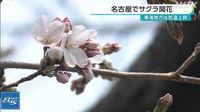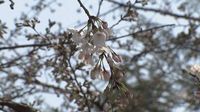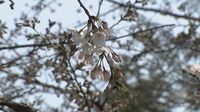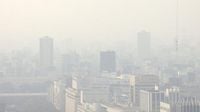As spring unfolds in Nagoya, the city is experiencing the delightful sight of cherry blossoms blooming, marking a seasonal transition that many locals eagerly anticipate. On March 26, 2025, the Nagoya Local Meteorological Observatory confirmed that the Someiyoshino cherry blossoms, a standard variety used for bloom observation, have officially opened. This year, the blooming occurred two days later than the average and two days earlier than last year, signaling a slight shift in seasonal patterns.
At around 10:30 AM, observatory staff counted five to six blossoms on the designated tree, meeting the criteria for announcing the bloom. "Here in Nagoya, spring has arrived, and with it, the joy of cherry blossoms," said Takahiro Kawaguchi, a senior technical officer at the observatory. He noted that the recent warm weather likely accelerated the growth of the buds. "I feel relieved that the trees, despite their age, have bloomed successfully this year. Full bloom is expected in the next week to ten days, with peak viewing anticipated in the latter half of next week," Kawaguchi added.
As residents flock to popular cherry blossom viewing spots like Tsuruma Park, the atmosphere is abuzz with excitement. "It’s a bit early for full bloom, but I can see some flowers starting to open, which is promising," remarked Shunji Sakurazawa, a weather forecaster. Approximately 750 Someiyoshino trees in the park have begun to show signs of blooming, attracting families and friends eager to experience the beauty of spring.
However, the arrival of spring also brings less welcome news: the observation of kosa, or yellow sand, has been noted over a wide area, including Nagoya, Gifu, and Tsu. This phenomenon has been occurring for two consecutive days, leading to concerns about visibility and health issues for those with allergies. On March 26, visibility was reported at just 4 kilometers in Nagoya and 7 kilometers in Gifu and Tsu, significantly lower than usual. The yellow sand can aggravate hay fever symptoms, prompting residents to take precautions.
In response to the yellow sand, many residents have been visiting gas stations for car washes. Reports indicate that from 8 PM on March 25 to 1 PM on March 26, around 115 groups stopped by for washes, which is notably higher than the daily average. "I came to wash my car because the yellow sand left a gritty layer on the windshield," said one customer, highlighting the impact of the weather on everyday life.
The Nagoya Local Meteorological Observatory has advised residents to remain cautious about the yellow sand, especially as it continues to affect air quality and visibility. Although the amount of kosa is expected to decrease, it will still linger into the morning of March 27, necessitating attention to its potential effects on laundry and transportation.
As the cherry blossoms bloom and the yellow sand settles, Nagoya finds itself at the intersection of beauty and challenge. The cherry blossoms, a symbol of renewal and the beauty of nature, remind residents of the joys of spring, while the yellow sand serves as a stark reminder of environmental factors that can disrupt daily life.
As the season progresses, the city will continue to embrace the beauty of the cherry blossoms while navigating the challenges posed by the yellow sand. With full bloom on the horizon, residents are hopeful for a season filled with joy, beauty, and a little less grit.







